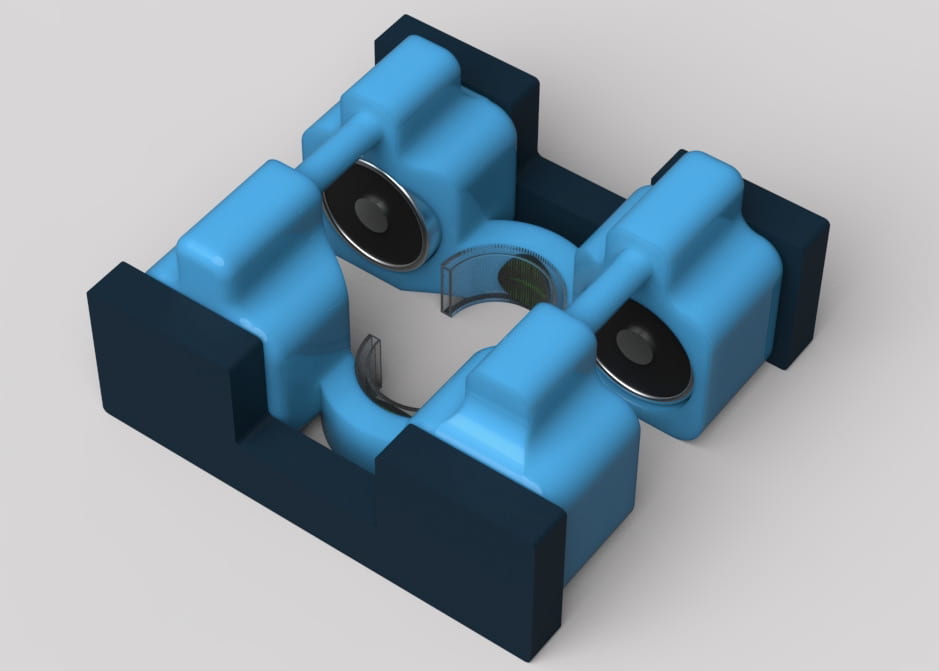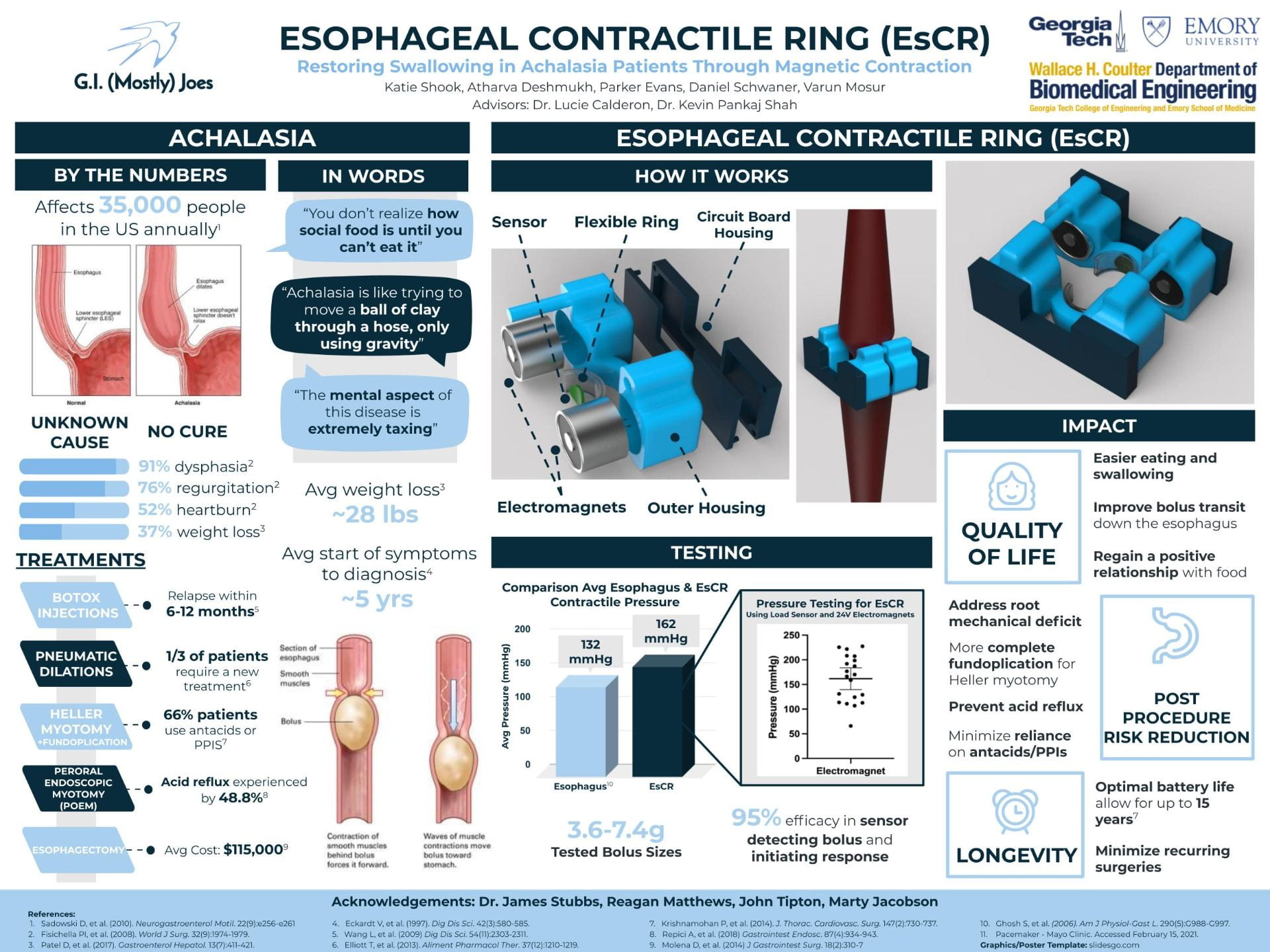Connect our team on LinkedIN!
Daniel Schwaner, Atharva Deshmukh, Katie Shook, Parker Evans, Varun Mosur
G.I. (Mostly) Joes
Esophageal Contractile Ring (EsCR): Restoring Swallowing in Achalasia Patients Through Magnetic Contraction
.The Esophageal Contractile Ring (EsCR) senses when a bolus approaches and initiates the electromagnetic force to create mechanical compression via the flexible ring attached to the esophagus. This creates a positive pressure above the bolus, assisting in its movement down the esophagus. The sensors sit behind the flexible ring which connects to the light blue outer housing holding electromagnets. The navy casing encapsulates the battery and circuitry.



